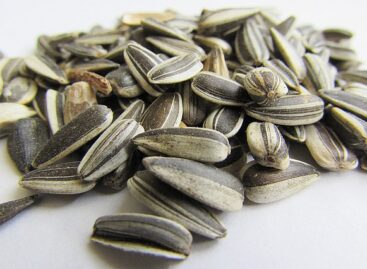Common farmland bird populations continue to decline
Birds in the EU are less abundant than a few decades ago. However, after many years of decline, it appears that the numbers of common birds have started to stabilize or even increase. This is particularly true for common forest birds whose population is estimated to have increased by 9% between 2000 and 2019.

The EU’s population of all common bird species is estimated to have declined by 4% but is showing signs of recovery in recent years, whereas the population of common farmland birds is in decline (‑17% since 2000).
This news item is published on the occasion of the International Day for Biological Diversity (22 May). Birds are considered as good indicators of the diversity and integrity of ecosystems as their populations reflect changes in the populations of species they feed on, such as insects. Birds are highly mobile – they can move elsewhere when their environment becomes unsuitable. This is why the presence, abundance and diversity of bird species tell a story about the condition of the environment and its development over time. Very importantly, birds are easier to observe than most other groups of animals and are attractive for the public to watch, hence a lot of data from bird watching are available.
The scientific community believes that major losses in populations of common farmland bird species can be attributed to changes in land use and agricultural practices, such as the disappearance of small non-productive landscape elements – hedges and windbreaks, and the use of pesticides. The effects of these drivers could be reversed by the Farm to Fork Strategy, which seeks a reduction of 50% in the overall use of and risk from chemical pesticides by 2030, and the EU Biodiversity Strategy for 2030 aiming to return at least 10% of agricultural land to land under high-diversity landscape features and enlarge the area under organic farming so that it accounts for 25% of the EU’s total farmed land by 2030.
For more information:
- Eurostat website sections on environmental and biodiversity statistics
- Eurostat Statistics Explained article on biodiversity statistics
- Bird protection in the EU and the Directorate-General for Environment of the European Commission
- EU Biodiversity Strategy for 2030
- Bird monitoring in the EU is conducted under the umbrella of the PanEuropean Common Bird Monitoring Scheme. The scheme helps standardize data collection and data analysis practices across countries and produces three indices of the populations of common birds – the index for all common birds (including 168 species), the index for common farmland birds (39 species) and the index for common forest birds (34 species).
Related news
The Ministry of Agriculture has issued a notice on the use of ENAR data in support policy
In the case of animal-based subsidies financed from EU funds,…
Read more >Farmer-centric agricultural policy after 2027 receives unanimous support
The EU member states’ agriculture ministers have adopted Council conclusions…
Read more >Slow but steady growth in sunflower producer prices
Oil World experts expect a global sunflower seed harvest of…
Read more >Related news
The Christmas season is starting earlier and earlier: value for money is the key
This year, 40 percent of Hungarians brought their Christmas shopping…
Read more >They want it to be premium, but also sustainable – expectations of the youngest generation
GlobalData’s latest report, “Demographics in Retail and Apparel” – which…
Read more >In six months, consumers donated 100 million forints to charitable causes through the mandatory redemption system
Through the deposit bottle return system, which began six months…
Read more >







